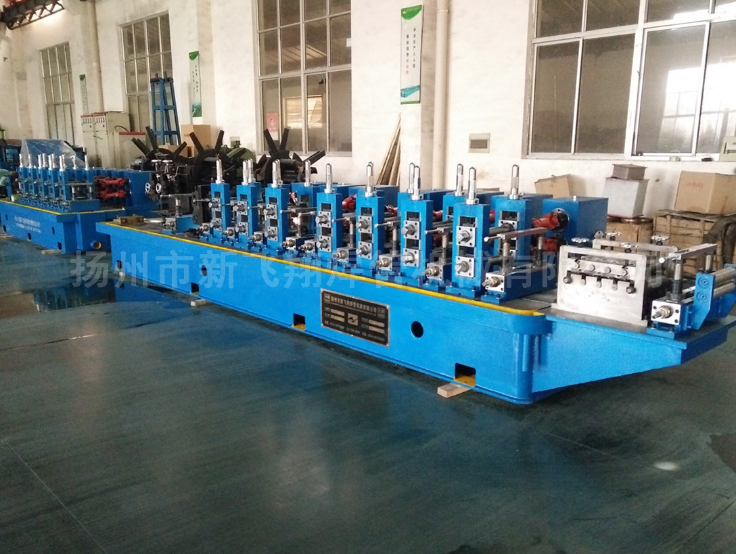The impact of frequency on high-frequency straight seam welding pipe equipment
Published Time:
2020-07-08
The frequency during high-frequency welding has a significant impact on the welding process, as the high frequency affects the distribution of current within the steel plate. The choice of high or low frequency mainly affects the size of the heat-affected zone of the weld. For welding efficiency, a higher frequency should be used as much as possible. A 100KHz high-frequency current can penetrate 0.1mm of ferritic steel, while 400KHz can only penetrate 0.04mm. That is, the current density distribution on the surface of the steel plate is approximately 2.5 times higher for the latter than the former. In production practice, a frequency of 350KHz~450KHz is generally selected when welding ordinary carbon steel; when welding alloy steel and steel plates thicker than 10mm, a lower frequency of 50KHz~150KHz can be used, because the skin effect of elements such as chromium, zinc, copper, and aluminum contained in alloy steel differs from that of steel. Most foreign high-frequency equipment manufacturers now use solid-state high-frequency technology. After setting a frequency range, the frequency is automatically tracked and adjusted during welding according to the material thickness, machine speed, etc.
Understanding the impact of frequency on welding allows for better operation and adjustment of high-frequency straight seam pipe welding equipment to achieve higher efficiency. Let's take a look at the impact of frequency on high-frequency straight seam pipe welding equipment.
The frequency during high-frequency welding has a significant impact on the welding process because the high-frequency frequency affects the distribution of current within the steel plate. The choice of high or low frequency mainly affects the size of the heat-affected zone of the weld seam. In terms of welding efficiency, a higher frequency should be used as much as possible. A 100KHz high-frequency current can penetrate 0.1mm of ferritic steel, while 400KHz can only penetrate 0.04mm, i.e., the current density distribution on the steel plate surface; the latter is nearly 2.5 times higher than the former. In production practice, a frequency of 350KHz~450KHz can generally be selected when welding ordinary carbon steel materials; when welding alloy steel materials and steel plates thicker than 10mm, a lower frequency of 50KHz~150KHz can be used because the skin effect of elements such as chromium, zinc, copper, and aluminum contained in alloy steel is different from that of steel. Most foreign high-frequency equipment manufacturers now use the new technology of solid-state high frequency. After setting a frequency range, it will automatically track and adjust the frequency during welding according to the material thickness, machine speed, etc.

Tags:









